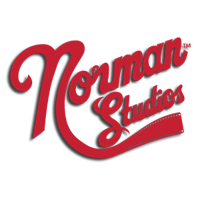Barbara Wingo, Vice President and Curator, Norman Studios Silent Film Museum, Inc.
 The work on our museum has begun! As our fans, friends and members know, the City of Jacksonville appropriated $1 million to the Parks Department to begin the process of making the production building (the main building) ready for a museum. Norman Studios Silent Museum, Inc. (NSSFM) will create displays in the museum to celebrate the history of the Norman Studios and of Jacksonville’s heyday as a movie-making location in the silent film era.
The work on our museum has begun! As our fans, friends and members know, the City of Jacksonville appropriated $1 million to the Parks Department to begin the process of making the production building (the main building) ready for a museum. Norman Studios Silent Museum, Inc. (NSSFM) will create displays in the museum to celebrate the history of the Norman Studios and of Jacksonville’s heyday as a movie-making location in the silent film era.
I invite your comments as we engage in the process of museum building. What stories would you like to see emphasized? What museum activities would you find interesting? Would you like to see animatronic figures, films and/or interactive exhibits? What subjects would you find engaging? What aspects of the history of Norman Studios should the museum highlight? What other questions would you like to see explored?
The primary stories to be told in this museum are:
The story of Jacksonville as the Winter Film Capitol of the world between 1907 and 1917. Part of that story: Eagle Film Manufacturing Company (from Chicago) in 1916 built a studio complex in the Arlington suburb of Jacksonville.
And even more significantly, in the early 1920s Richard Norman, a white Floridian, bought the Eagle studios complex to continue his production of so-called “race films”. These were films for primarily African-American audiences that rejected the prevailing stereotypes of African Americans as they were portrayed in the great majority of the motion pictures of the day. A National Historic Landmark, Norman Studios is the only extant race films studio.
The African-American actors that played in Norman’s films will be highlighted. Other exhibits will profile the black aviators of the period – such as Bessie Colman and Eugene Bullard – which were the inspiration for Norman’s only extant film, The Flying Ace.
In the museum we hope that various aspects of silent film movie making will be shown. Extant in the production building are the screening (or rush) room, the projection room, editing room lights and a large walk-in safe in which the highly volatile nitrate film was stored. We hope that an interactive exhibit will allow guests to make their own silent films.
We are so appreciative of the support of the City of Jacksonville – and look forward to this first phase of the construction of the museum within the production building.

